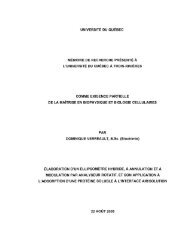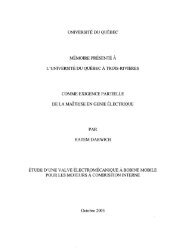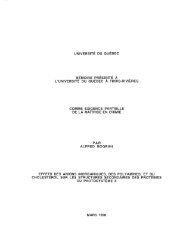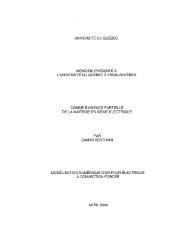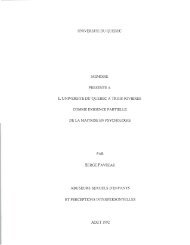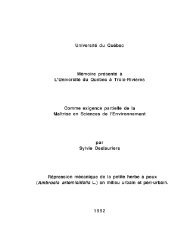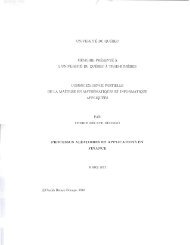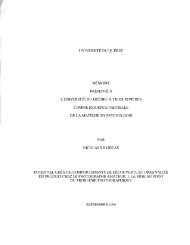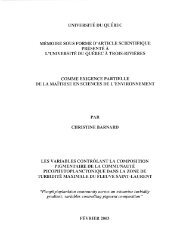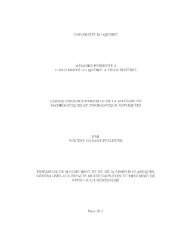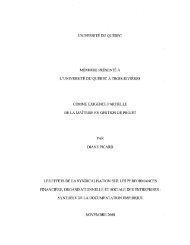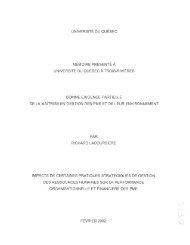Biomanipulation du meunier noir (Catostomus commersoni)
Biomanipulation du meunier noir (Catostomus commersoni)
Biomanipulation du meunier noir (Catostomus commersoni)
Create successful ePaper yourself
Turn your PDF publications into a flip-book with our unique Google optimized e-Paper software.
to respond to these changes. Although the short-term impacts of biomanipulations have<br />
been evaluated in many studies, long-term surveys were rarely done (Sutherland et al.<br />
2004).<br />
The objective of the present study was to quantify the white sucker and brook trout<br />
responses to 6-9 years of white sucker mass removal in three lakes and to the cessation<br />
of this biomanipulation in two of these lakes. The species responses were determined by<br />
comparing their abundance, biomass, growth and fecundity, before, <strong>du</strong>ring and after the<br />
end of mass removals. A third lake, which was still undergoing mass removals at the<br />
time of the study, had not shown strong decreases in white sucker abundances. This lake<br />
was also the object of a comparison with previous results in order to determine if the<br />
important decrease in white sucker abundance observed in recent years has lead to the<br />
expected responses in the white sucker and brook trout populations.<br />
3.3 MATERIALS AND METHODS<br />
3.3.1 Stndy lakes<br />
The biomanipulation experiment took place in 3 lakes located in the province of<br />
Québec (Canada). Lakes Mastigou, Claudette and Des Îles are located in Réserve<br />
Mastigouche (46°34'N, 73°34'W), ZEC (Zone d'exploitation contrôlée) Martin-Valin<br />
(48°40'N, 70 0 37'W) and ZEC des Nymphes (46°28'N, 73°35'W) respectively. The three<br />
lakes are typical oligotrophic temperate lakes (Brodeur et al. 2001) and contain<br />
sympatric brook trout and white sucker populations. Lakes Mastigou and Des Îles also<br />
contained other cyprinid species, but their relative biomass accounted for less than 10%<br />
of total fish biomass before mass removal (Table 1). Brook trout populations of alllakes<br />
are subject to sport fishing and exploitation is carefully controlled by the Québec<br />
government.<br />
56



